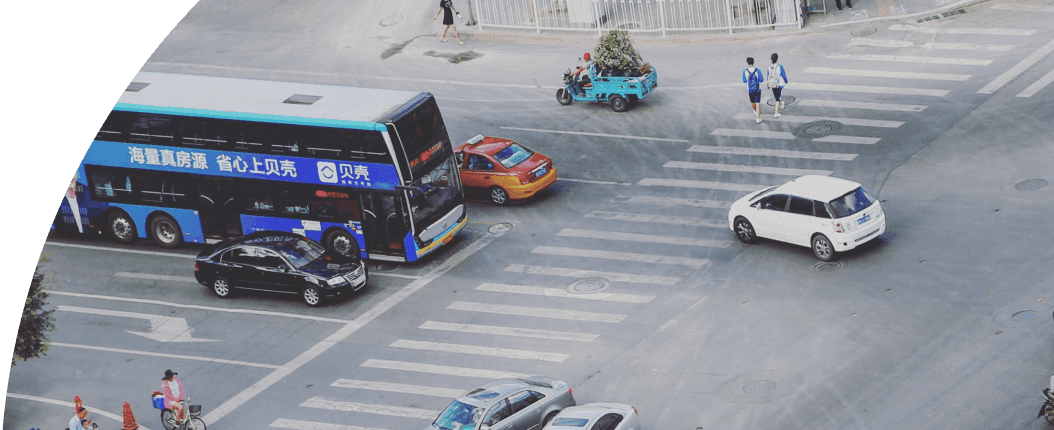
News
By Smart Growth America, November 1, 2019
Climate change has become a top issue for Americans, so how do the top Democratic candidates plan to reduce emissions? Here’s a brief look at what some of the presidential candidates are proposing when it comes to emissions from transportation.
This post was originally published by Transportation for America, a program of Smart Growth America.
A recent poll found that most American teenagers are “frightened” by climate change. It is no surprise then that candidates for president and members of Congress are releasing their plans to combat the climate crisis. So what do presidential candidate front-runners say about transportation in their climate plans? Not nearly enough.
Virtually every plan released to date focuses on promoting electric vehicles (EVs) and strengthening fuel efficiency (CAFE) standards. While EV adoption and increased efficiency are essential for reaching any ambitious climate target, they will not be sufficient on their own to decarbonize the transportation sector.
T4America Director Beth Osborne explained why recently in the San Francisco Chronicle:
Transportation is now the largest single source of climate pollution and the vast majority of those emissions—83 percent—come from the cars and trucks that people drive to the grocery store or school or that deliver our Amazon orders. All that driving is why transportation pollution keeps increasing, despite gains in fuel efficiency standards and the adoption of electric vehicles. Between 1990-2016, despite a sizable 35 percent increase in the overall fuel efficiency of our vehicle fleet, national emissions rose by 21 percent. Why? Because those improvements were accompanied by a 50 percent increase in driving. Cleaner and electric vehicles are essential, but they’ll only ever be a small part of the solution. For one, it takes a long time for the vehicle fleet to turn over. Even if Americans purchased nothing but electric vehicles starting today, gas-powered cars would still be on the road for at least another 15 years.
Emissions won’t drop fast enough if we pin all our hopes on EVs. We need to reduce the amount and distance people drive through better land use and by promoting transit, walking, and biking. Today, our federal policy incentivizes high speed, long distance driving—rewarding states that increase both with more money—and makes it far too difficult to build communities which provide people with transportation choice.
Even the Green New Deal fails to adequately address the need to reduce driving and rethink our land use decisions.
Climate plan proposals on transportation
We took an in-depth look at the climate plans from the top eight presidential candidates (according to RealClearPolitics polling data as of November 1, 2019) for the Democratic Party nomination. We’ve also included Jay Inslee in our analysis, despite the fact that he dropped out of the race, because his climate plan is widely considered to have set the standard for climate plans.
There are some candidates running for the Republican Party nomination for president, but none of them have released climate plans. The closest thing President Trump has to a climate plan is the “Affordable Clean Energy” rule which could actually increase pollution.
Note: Investments, quantifiable targets, or policy proposals below are bolded; broad value statements or acknowledgements of an issue without a proposal to address it are not bolded.
Politicians think EVs will solve our transportation problems
It’s telling that each candidate has ambitious targets for EV adoption but largely lack policies and investments for other forms of transportation. While EVs will go a long way toward reducing transportation emissions, they don’t go quite far enough. As we’ve written about previously, an all electric vehicle fleet won’t reduce emissions enough to reach our climate targets.
Not only will EVs fail to address the climate crisis, but they will do nothing to address the larger shortcomings of our current transportation system.
EVs won’t make our communities more walkable, bikeable, or transit-oriented. We’ve designed many of our roadways and communities so that it’s almost impossible to get around without a car. People often have no choice but to sit in traffic to get to work and the grocery store. Electrifying everything won’t change this. Nor will it help those who can’t afford a vehicle in the first place, regardless of how it’s powered. We need holistic transportation solutions that make it safe, affordable, and convenient to get people where they need to go.
The elephant in the room
These plans are all missing any meaningful discussion and understanding of how land use and transportation are inextricably linked, likely because we tend to think that the federal government plays no role in land use decisions.
But federal transportation policy drives local land use decisions. Where we build roads and highways influences where developers build houses and stores. When we give states a blank check to build a new highway while giving them a minuscule amount for transit (if they can jump through all the regulatory hoops we apply to transit funding), we’re encouraging more sprawl. As houses, businesses, parks, and other daily destinations spread farther apart, people are forced to drive farther, increasing our emissions in the process.
Federal transportation policy has an essential role to play in reducing transportation emissions and making our transportation system work for everyone. How we spend federal transportation money should reflect this and keep climate goals in mind. So far, it seems as though most Democratic presidential candidates don’t quite understand this.
Related News

© 2025 Smart Growth America. All rights reserved
Site By3Lane Marketing








